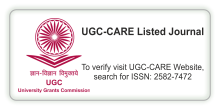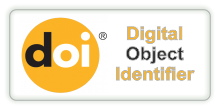ORGANIZATIONAL CULTURE, INNOVATION AND STRUCTURE AS DETERMINANTS OF ORGANIZATIONAL PERFORMANCE: A LITERATURE REVIEW
DOI:
https://doi.org/10.29121/shodhkosh.v4.i2.2023.3963Abstract [English]
The purpose of this systematic literature review (SLR) is to investigate how organizational structure (OS), innovation and culture (OC) affect organizational performance (OP). With an emphasis on comprehending how these elements collectively affect performance results, it synthesizes previous research to investigate the direct and indirect relationships between OC, OS, and OP. Important factors like Organizational Quotient (OQ) are also thought to offer a thorough viewpoint. The review finds that OC, OS, and OP have beneficial relationships in a variety of scenarios, especially in small and medium-sized businesses (SMEs). This study aims to identify the ways in which organizational culture and structure influence performance and spur innovation in businesses by carefully examining previous studies.
References
Büschgens, T., Bausch, A., & Balkin, D. B. (2013). Organizational Culture and Innovation: A Meta-Analytic Review. Journal of Product Innovation Management, 30(4), 763-781. https://doi.org/10.1111/jpim.12021 DOI: https://doi.org/10.1111/jpim.12021
Sadegh Sharifirad, Mohammad, and Vahid Ataei. "Organizational culture and innovation culture: exploring the relationships between constructs." Leadership & Organization Development Journal 33.5 (2012): 494-517. DOI: https://doi.org/10.1108/01437731211241274
Poškienė, Audronė. "Organizational culture and innovations." Engineering economics 1 (46) (2006): 45-50.
Chen, Zhi, et al. "Fit between organizational culture and innovation strategy: Implications for innovation performance." Sustainability 10.10 (2018): 3378. DOI: https://doi.org/10.3390/su10103378
Li, Wenjing, et al. "Organizational innovation: the role of leadership and organizational culture." International Journal of Public Leadership 14.1 (2018): 33-47. DOI: https://doi.org/10.1108/IJPL-06-2017-0026
Jaskyte, Kristina, and William W. Dressler. "Organizational culture and innovation in nonprofit human service organizations." Administration in social work 29.2 (2005): 23-41. DOI: https://doi.org/10.1300/J147v29n02_03
Hogan, Suellen J., and Leonard V. Coote. "Organizational culture, innovation, and performance: A test of Schein's model." Journal of business research 67.8 (2014): 1609-1621. DOI: https://doi.org/10.1016/j.jbusres.2013.09.007
Claver, E., Llopis, J., Garcia, D. and Molina, H., 1998. Organizational culture for innovation and new technological behavior. The Journal of High Technology Management Research, 9(1), pp.55-68. DOI: https://doi.org/10.1016/1047-8310(88)90005-3
Szczepańska-Woszczyna, Katarzyna. "The importance of organizational culture for innovation in the company." Forum scientiae oeconomia. Vol. 2. No. 3. 2014.
---
Huizingh, E. K. (2011). Open innovation: State of the art and future perspectives. Technovation, 31(1), 2-9. DOI: https://doi.org/10.1016/j.technovation.2010.10.002
Elmquist, M., Fredberg, T., & Ollila, S. (2009). Exploring the field of open innovation. European Journal of Innovation Management, 12(3), 326-345.. DOI: https://doi.org/10.1108/14601060910974219
West, J., & Bogers, M. (2014). Leveraging external sources of innovation: A review of research on open innovation. Journal of product innovation management, 31(4), 814-831. DOI: https://doi.org/10.1111/jpim.12125
Chesbrough, H. W., & Appleyard, M. M. (2007). Open innovation and strategy. California management review, 50(1), 57-76. DOI: https://doi.org/10.2307/41166416
Chesbrough, H. (2004). Managing open innovation. Research-technology management, 47(1), 23-26. DOI: https://doi.org/10.1080/08956308.2004.11671604
Chesbrough, H., Vanhaverbeke, W., & West, J. (Eds.). (2014). New frontiers in open innovation. Oup Oxford. DOI: https://doi.org/10.1093/acprof:oso/9780199682461.001.0001
Enkel, E., Gassmann, O., & Chesbrough, H. (2009). Open R&D and open innovation: exploring the phenomenon. R&d Management, 39(4), 311-316. DOI: https://doi.org/10.1111/j.1467-9310.2009.00570.x
West, J., & Bogers, M. (2017). Open innovation: current status and research opportunities. Innovation, 19(1), 43-50. DOI: https://doi.org/10.1080/14479338.2016.1258995
Sapolsky, H. M. (1967). Organizational structure and innovation. The Journal of Business, 40(4), 497-510. DOI: https://doi.org/10.1086/295014
Cosh, A., Fu, X., & Hughes, A. (2012). Organisation structure and innovation performance in different environments. Small Business Economics, 39, 301-317. DOI: https://doi.org/10.1007/s11187-010-9304-5
Damanpour, F., & Aravind, D. (2012). Organizational structure and innovation revisited: From organic to ambidextrous structure. In Handbook of organizational creativity (pp. 483-513). Academic Press. DOI: https://doi.org/10.1016/B978-0-12-374714-3.00019-7
Hao, Q., Kasper, H., & Muehlbacher, J. (2012). How does organizational structure influence performance through learning and innovation in Austria and China. Chinese Management Studies, 6(1), 36-52. DOI: https://doi.org/10.1108/17506141211213717
Dedahanov, A. T., Rhee, C., & Yoon, J. (2017). Organizational structure and innovation performance: is employee innovative behavior a missing link?. Career Development International, 22(4), 334-350. DOI: https://doi.org/10.1108/CDI-12-2016-0234
Daugherty, P. J., Chen, H., & Ferrin, B. G. (2011). Organizational structure and logistics service innovation. The International Journal of Logistics Management, 22(1), 26-51. DOI: https://doi.org/10.1108/09574091111127543
Sundbo, J., & Gallouj, F. (2000). Innovation as a loosely coupled system in services. International Journal of Services Technology and Management, 1(1), 15-36. DOI: https://doi.org/10.1504/IJSTM.2000.001565
Mazzola, E., Bruccoleri, M., & Perrone, G. (2012). The effect of inbound, outbound and coupled innovation on performance. International Journal of Innovation Management, 16(06), 1240008. DOI: https://doi.org/10.1142/S1363919612400087
Meynard, J. M., Jeuffroy, M. H., Le Bail, M., Lefèvre, A., Magrini, M. B., & Michon, C. (2017). Designing coupled innovations for the sustainability transition of agrifood systems. Agricultural systems, 157, 330-339. DOI: https://doi.org/10.1016/j.agsy.2016.08.002
Binz, C., Truffer, B., Li, L., Shi, Y., & Lu, Y. (2012). Conceptualizing leapfrogging with spatially coupled innovation systems: The case of onsite wastewater treatment in China. Technological Forecasting and Social Change, 79(1), 155-171. DOI: https://doi.org/10.1016/j.techfore.2011.08.016
Chou, C., Yang, K. P., & Chiu, Y. J. (2016). Coupled open innovation and innovation performance outcomes: Roles of absorptive capacity. Corporate Management Review, 36(1), 37-68.
Rouyre, A., & Fernandez, A. S. (2019). Managing knowledge sharing-protecting tensions in coupled innovation projects among several competitors. California Management Review, 62(1), 95-120. DOI: https://doi.org/10.1177/0008125619885151
Mortara, L., Napp, J. J., Slacik, I., & Minshall, T. (2009). How to implement open innovation: Lessons from studying large multinational companies. University of Cambridge Institute for Manufacturing.
Golightly, J., Ford, C., Sureka, P., & Reid, B. (2012). Realising the value of open innovation. Big Innovation Centre (The Work Foundation and Lancaster University), London.
Downloads
Published
How to Cite
Issue
Section
License
Copyright (c) 2023 Rama Iyer

This work is licensed under a Creative Commons Attribution 4.0 International License.
With the licence CC-BY, authors retain the copyright, allowing anyone to download, reuse, re-print, modify, distribute, and/or copy their contribution. The work must be properly attributed to its author.
It is not necessary to ask for further permission from the author or journal board.
This journal provides immediate open access to its content on the principle that making research freely available to the public supports a greater global exchange of knowledge.































